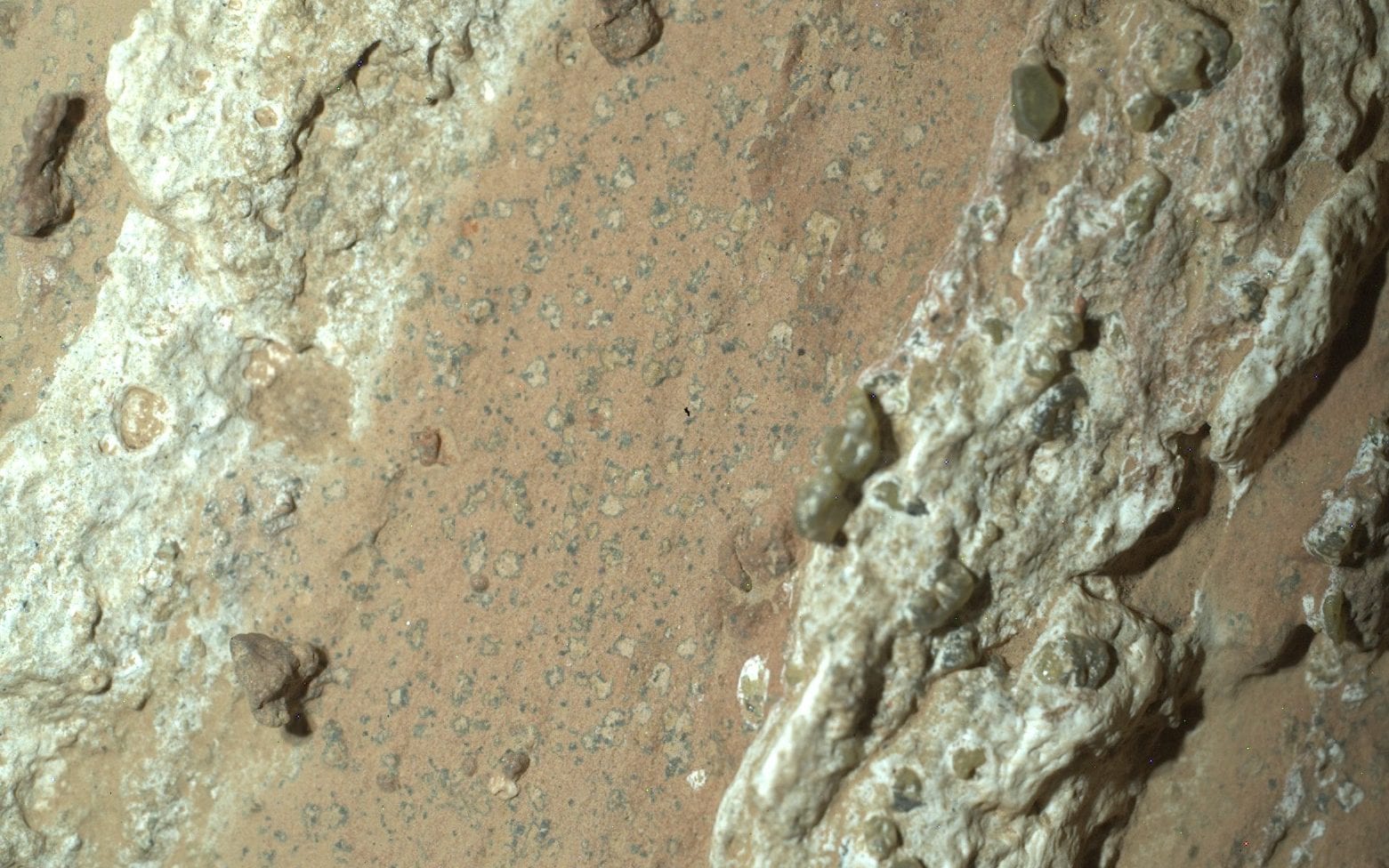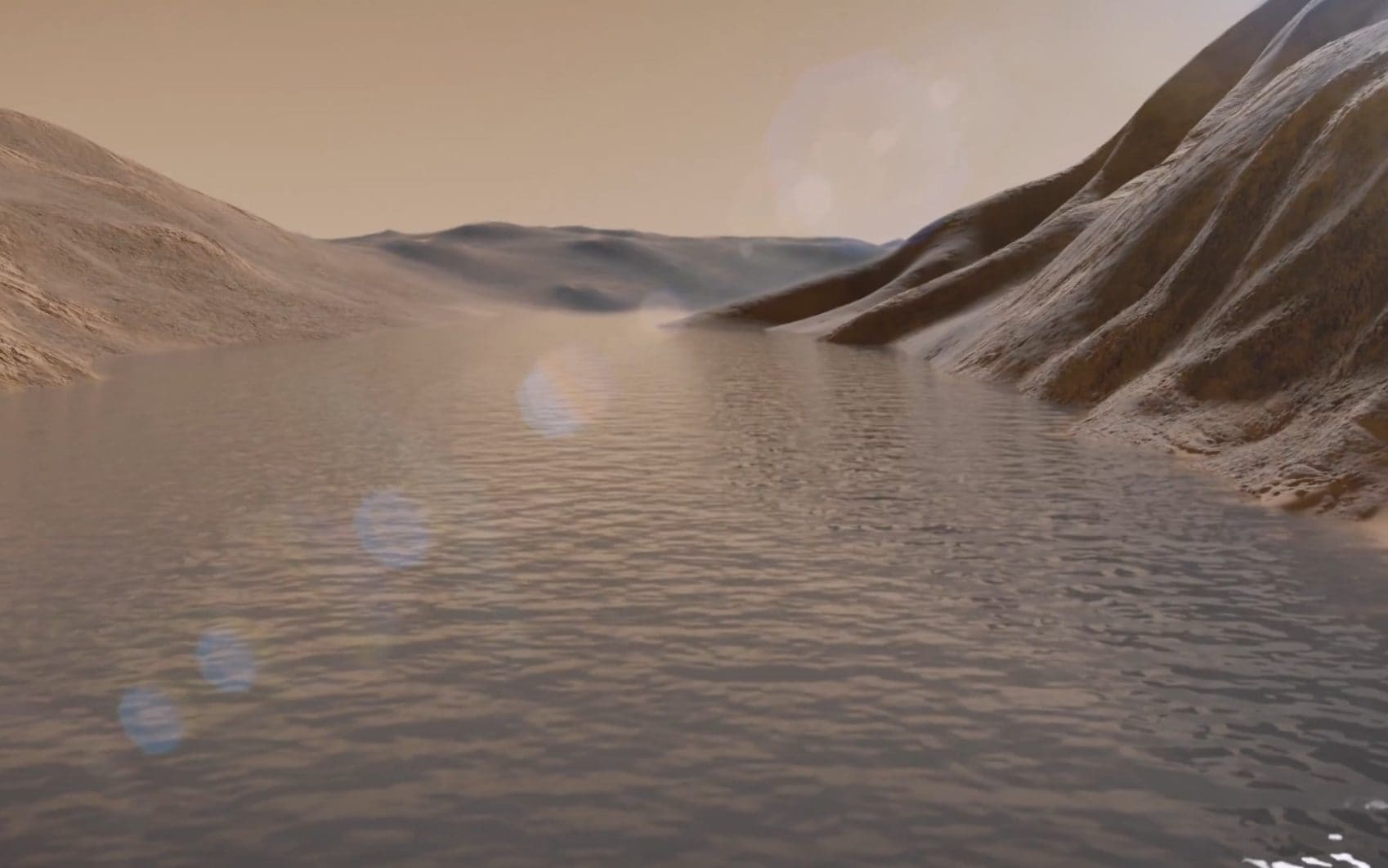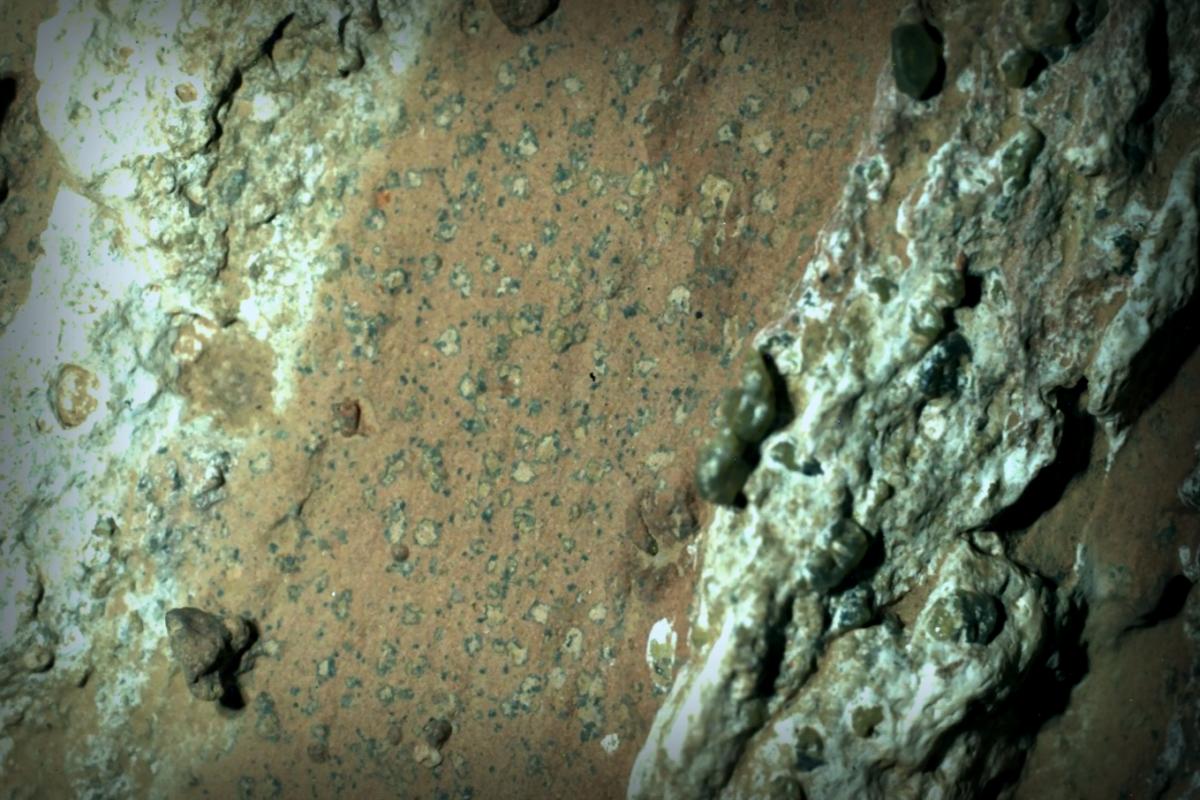
According to NASA, peculiar patterns found on Martian rocks might be the most compelling indicators yet that ancient life once existed on the planet.
Last year, the Perseverance rover unveiled rusty streaks at an ancient, now-dry riverbed in the Jezero Crater, which lies just north of the Martian equator.
Initially, scientists weren’t sure what to make of the colorful spots; however, after a lengthy investigation into alternative explanations, they are gaining confidence in their implications.
Now, experts are discussing the potential significance of these findings, claiming it’s the closest we’ve come to discovering any ancient life on Mars .
High-res imaging revealed a unique arrangement of minerals, which experts refer to as reaction fronts . These areas show where chemical and physical interactions are happening, resembling the patterns of leopard spots.
During their analysis, scientists identified two iron-rich minerals: vivianite, which often appears in organic-rich sediments and decaying matter, and greigite, a mineral associated specifically with microbial processes on Earth.
NASA noted these marks could result from ancient microbes interacting with organic carbon, sulfur, and phosphorus present in the rock as valuable energy sources.

At a press briefing, Sean Duffy, acting administrator of NASA, said, A year ago, we were intrigued by potential microbial life on Mars, and we challenged the scientific community to test our findings. Did we correctly identify it?
Following a year of rigorous exploration, experts have reiterated no other explanations suffice. Thus, we may have unearthed one of the strongest signs of life we’ve seen on Mars, an exhilarating moment for us all.
Despite the barren, dry landscape of the Jezero Crater, which remains largely inhospitable, scientists argue that over 3.7 billion years ago, it displayed signs of water and possibly life.
Satellite imagery illustrates regions of this crater mirroring Earth’s river deltas, characterized by fan-shaped sediment deposits formed by flowing rivers merging with lakes.
Today, the crater is littered with enormous boulders carried by ancient currents. Layers enriched in fine-grained clay and mudstone create environments favorable for preserving signs of ancient life, which have previously remained elusive.
The new markings suggest that life may have existed on Mars simultaneously as it began on Earth.
Nicky Fox, a British academic and associate administrator of NASA’s Science Mission Directorate, hailed the discovery as an extraordinary finding .
Today is a momentous day, she elaborated. The thorough analysis conducted on these leopard spots indicates a strong likelihood they originated from ancient life. This discovery is the closest we have been to answering the question of life on Mars.
Considering our galaxy spans approximately 100,000 light years, around us are at least 400 identified planets within 10 light years, which raises the possibility—some might argue, the probability—of encountering extraterrestrial life beyond Earth, maybe even complex intelligent beings.
Today, we’re moving closer to unraveling one of humanity’s deepest mysteries: are we genuinely alone in this vast universe?
Perseverance landed in February 2021 in a region deemed optimal due to its resemblance to Earth’s river deltas.
The rover came across these intriguing marks while studying Cheyava Falls, a pointed rock measuring about 3.2ft by 2ft in an area known as the Bright Angel formation.

Dr. Joel Hurowitz, a researcher from Stony Brook University and lead author of the study, expressed his enthusiasm: I want to share the excitement we experienced upon receiving these images last summer.
In this rock, we detected features that indicated fascinating chemical reactions had taken place when the minerals were originally deposited.
When we encounter such features in Earth’s sediments, the resulting minerals commonly stem from metabolic processes that digest organic matter, producing those mineral formations.
Nasa mentioned possible non-biological processes might explain the formations—such as extreme heating of the rocks—but found no supporting evidence in that region.
Dr. Hurowitz added, We need to retrieve a sample to Earth for a definitive analysis.

Nasa’s Mars Sample Return mission, conducted jointly with the European Space Agency, is anticipated to recover samples for analysis by the end of the 2030s.
Findings regarding potential extraterrestrial life claims need solid proof, pointed out Katie Stack Morgan, project scientist for Perseverance at NASA’s Jet Propulsion Laboratory in California.
Publishing these important findings within a peer-reviewed context is crucial for establishing the integrity, relevance, and importance of our results.
While it seems less probable that the geological occurrences at Bright Angel can be explained without biological context based on our findings, we haven’t entirely ruled them out.
This compelling research has been documented in the journal Nature.


















